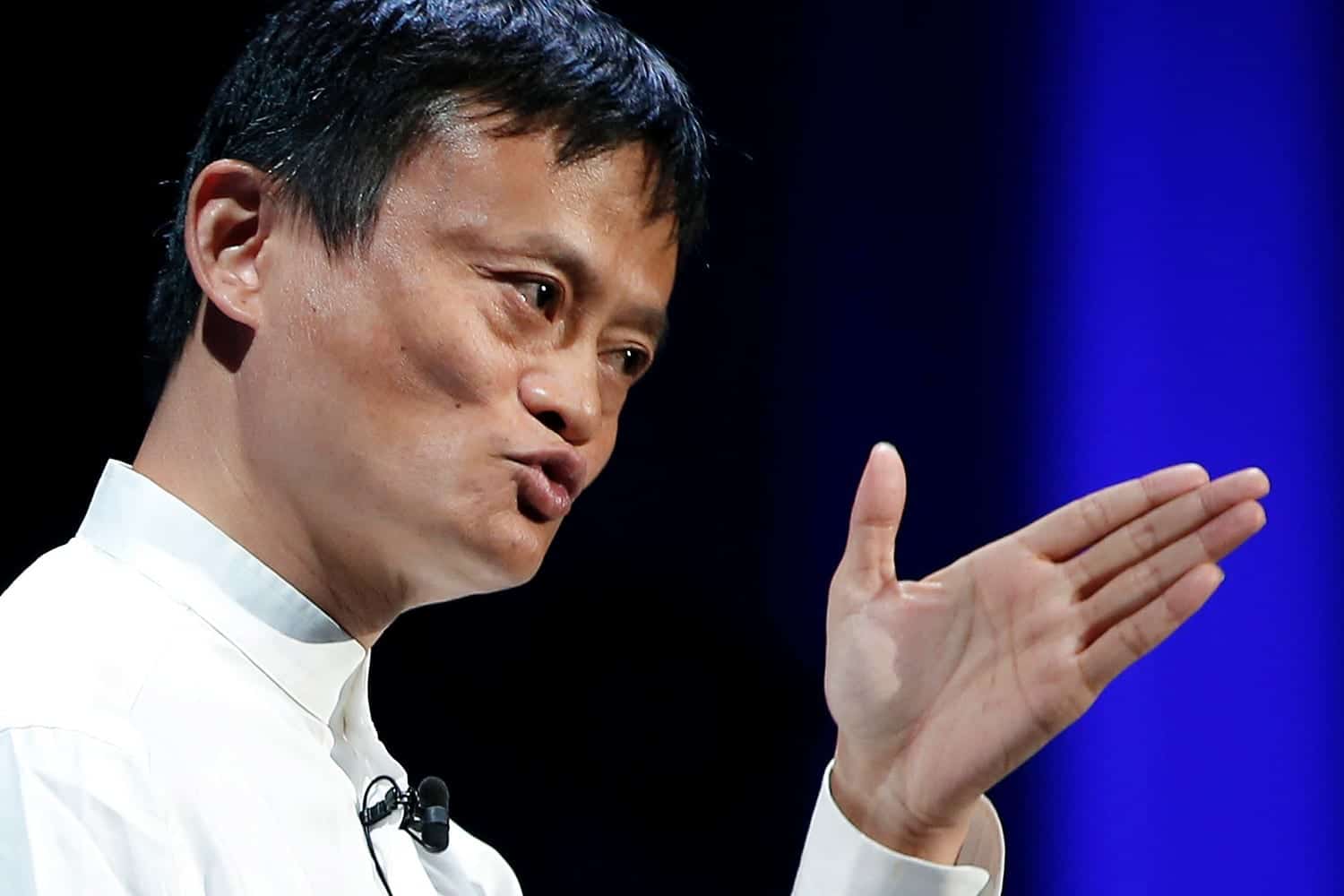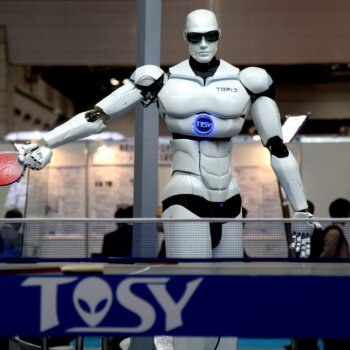In October 1999, Goldman Sachs invested $3.3 million in an unknown Chinese Internet startup operating out of its founder’s apartment. Shortly after came the dotcom bust in 2000, but the startup survived and by early 2004 Goldman cashed out for $22 million — nearly seven times ROI.
Good deal for Goldman, right? Except for one minor detail — that startup was Alibaba, and ten years later it was returning the favor to Goldman in a very unexpected way, employing the investment bank to underwrite its IPO on the NYSE. Which, by the way, valued Alibaba at $168 billion, more than double that of what Goldman’s worth today.
Success stories like Alibaba’s and mobile upstart Xiaomi’s ($45B and still private) have romanced investment in Asia’s startups to reach unprecedented levels over the last five years. Riding the Alibaba dragon, e-commerce startups have been particularly successful at attracting prodigious funding, even at a nascent stage. With Asia having 45.7% of the world’s Internet population and yet only 34.7% penetration rate (the rest of world is at 51.8%), it’s not hard to see why. Nearly every country has either been colonized by Groupon or Amazon, or has invented its own localized clones. But with so many e-commerce startups emerging with billion-dollar valuations with no profits, and talk of yet another Internet bubble forming, can we realistically expect any of them to replicate Alibaba’s success? To make sense of these heady valuations, let’s take a deeper look at four comparable Asian e-commerce startups which have caught the public eye a lot lately. I’ve chosen these subjects because they share the following traits and may make for interesting comparison:
- Founded in 2010 or later
- Achieved Unicorn status (> $1B valuation)
- Originated from a country ranked in Asia’s top 5 by number of Internet users
- Coupang (South Korea), founded 2010 :
At a $5B valuation, Coupang is a behemoth in startup terms. Beginning operations as a Groupon clone, Coupang has pivoted and is now a full-fledged ecommerce platform maintaining its own inventory and logistics chain. South Korea’s answer to Amazon, Coupang’s pages are refreshing, colorful, and modern — filled with the latest fashion items and advertisements featuring KPop celebrities. Its founder, Kim Bom, is a Harvard Business School dropout who idolises Masayoshi-son of Softbank fame. And one can imagine it’s no accident that of the $1.4B it’s raised so far, Softbank alone contributed a cool $1B in one of the biggest single startup investment of 2015. While South Korea has a (relatively) small market of roughly 45m Internet users, it has a tech-savvy population and one of the highest Internet speeds in the world, conditions which have allowed e-commerce to flourish rapidly.
2. Snapdeal (India), 2010:
Gurgaon-based Snapdeal has doesn’t do its own logistics, and pretty much still operates a Groupon-like business model. Like Coupang, its two co-founders went to prestigious universities, in UPenn and IIT respectively. Very recently, it received a $500 million injection from Alibaba and Softbank, valuing it at an impressive $5 billion in a country with roughly 250m Internet users.
3. Meituan (China), 2010:
Meituan is the equivalent of Snapdeal in China — by far the biggest market with over 600 million Internet users. A group discount website, it specializes in localized consumer services and last year alone sold $7.4B of deals and vouchers. It’s also received a monster round in 2015 ($700M in January), and at $7 billion is currently the highest valued of the four.
4. Lazada (Singapore/Southeast Asia), 2012:
For good measure, I’m throwing in Lazada into the mix to give some perspective from one of the hottest regions in Asia right now — Southeast Asia. The youngest of the quartet, Lazada is an outlier from the above three in many ways — It’s only valued at $1.25 billion, it didn’t start out as a Groupon clone, and it wasn’t founded by a native (it’s of Rocket Internet* origin). But having hit the $1B mark in 2.75 years there’s no questioning Lazada’s ambition. At this level of valuation, it’s slightly ahead of the other three at the same stage — though with Rocket’s backing it’s almost expected to immediately outperform. Operating primarily as a B2C platform (but also some C2C) and spearheaded by a McKinsey alumnus, Lazada has been allowed to expand with ruthless, German-like efficiency in courting the over 190 million Internet users in Southeast Asia.
*For the unacquainted, Rocket Internet is a German Internet company which runs a global empire of businesses primarily founded by replicating the strategies of other successful companies in new markets.
Some Numbers:
Numbers don’t lie. Well, assuming we can trust the authenticity of the numbers in the first place.
Let’s begin by looking at the cumulative investment in the four companies over the last five years:
Snapdeal has raised the most with $1.56 billion, followed closely by Coupang with $1.4B and Meituan with $1.07B. Most of the investments have come in 2014 and 2015 (Snapdeal was particularly prolific in 2014 and Coupang in a similar sense in 2015 with that $1B Softbank infusion). Meanwhile, Lazada has yet to publicly disclose any funding rounds in 2015, and lags behind the pack at $680m. Yet, Lazada is only three years old, and is well ahead of the other three companies at their respective 3-year marks.
Cumulative investment, however, only tells us how much cash the companies have to burn, but indicates to us little about their value. While it’s difficult to ascertain the valuations at each funding stage, we can at least confirm that at the moment, Meituan is valued the most. For reference, Meituan, Coupang & Snapdeal are all — for now at least — valued more than the very company they set about emulating —yes, the father of daily deals, Groupon ($2.8B).
- Meituan: $7B
- Coupang/Snapdeal: $5B
- Lazada: $1.25B
How do these astronomical valuations compare with how the companies are doing? Here’s where the picture gets slightly murky. Having no access to properly documented income statement disclosures, I’ve had to rely on whatever’s been said in press releases or the companies’ own reports. Profitability is shrouded in secrecy but it’s probably safe to assume none of these companies are profitable. Still, I’ve gathered sufficient information about their sales numbers.
Here’s where Meituan’s performance — in line with its valuation — outshines the rest. Meituan claimed $7.5B GMV in 2014 and is forecasting a $16B GMV run-rate for 2015. In comparison, Snapdeal, also a daily-deals pure play, only broke $1B in 2014 but is growing at a similar rate as Meituan, forecasting $10B by end 2015. While we’d expect the GMVs of an end-to-end e-commerce model to take off slower than a third-party, daily deals model — Lazada & Coupang both illustrate that, Coupang is impressively predicting its GMV will break $3.9B in 2015. Lazada grew its GMV from 300% through 2013 to 2014, and should break the vaunted $1B mark this year. If they manage to hit these numbers (remember this is a prediction), here’s how their valuation/GMV multiples will look like:
- Meituan: 0.44
- Snapdeal: 0.50
- Lazada: 1.25
- Coupang: 1.26
How do the industry veterans compare? Here are the Price/Sales multiples for Amazon, Groupon, and Alibaba as of 18 Sep 2015:
- Groupon: 0.910
- Amazon: 2.635
- Alibaba: 12.85
Revisiting the earlier valuations, they don’t seem so crazy after all. Meituan’s and Snapdeal’s multiples are half that of Groupon’s, while Coupang’s and Lazada’s are half that of Amazon’s and four times lower than Alibaba’s. The mechanics of this direct comparison are flawed (especially when we consider factors like Groupon charging merchants 40-50% of their listed deal price while Meituan only charges something like 5%), but at least we get a clearer picture of why they are valued that way.
The immediate phase ahead : Domestic supremacy
At a high level at least, we’ve justifiably established that Asian investors haven’t gone mad and there is still some sensibility in the market today. But what lies ahead for these power-hungry unicorns?
In theory, the next phase is straightforward: Establish oneself as the undisputed domestic leader by channelling as much money as possible towards customer acquisition. Get customers, and deals will flow right? With so much money on the table, it seems impossible to fail. E-commerce is continuously growing and Asians love to shop, so what’s there not to like about this strategy? Competition, that’s what. Asia is synonymous with competitiveness and it takes a lot of investment — and strategy — to become peerless on the domestic scene. It’s a large factor that explains why Amazon and Groupon, despite their scale, have been largely unable to penetrate into the region. The other, of course, is that Asian markets are less homogeneous than Western markets.
China: A thousand Chinese Groupons
There’s no better place than China to begin a conversation about competition. It’s no secret that the Chinese are ridiculously good at “copycat innovation”. As a result thousands of e-commerce sites exist and there is no model more copied in China than Groupon’s. The stories of the rise and fall of these Chinese Groupons contain so much drama it would take days to tell them all. But here’s the gist: When Groupon tried to launch in China five years ago, it found — to its horror — that someone in China had beat them to the Groupon domain and had already started a business called Groupon.cn. As a result original Groupon had to launch under a different name (Gaopeng) when it expanded to China. Groupon then had to acquire Groupon.cn to boost its business, but that’s another story. In 2011, possibly the peak of the Groupon craze where there were at least 1500 clones, the market leader was Lashou, and things were looking up for the fledgling startup. A few years, a failed IPO and some market stabilization later, Lashou has fallen way off the pace, dozens of other startups have traded market share leadership countless times, and Gaopeng still hasn’t even been able to break into the top ten.
Meanwhile, a pattern of what might become the most interesting three-headed fight in China over the next couple of years has emerged with increasing clarity. A direct showdown among the big three in China — Baidu, Alibaba, and Tencent is happening right now, not just in e-commerce but in all sectors of the Internet economy. B.A.T, as they are otherwise known, made their name through disparate channels — search engines, e-commerce, and social media/messaging respectively, but have since expanded so astronomically that they that it almost takes the backing of one of them to enjoy prolonged success in the Chinese Internet market.
Meituan’s arsenal? A direct and big-money backing from the Alibaba Group (which also owns Juhuasuan, another successful Daily Deals platform that’s even enjoyed expansion to Hong Kong and Taiwan). With 51% of the B2C market through TMall and 95% of C2C through Taobao, Alibaba’s support will be crucial to Meituan’s prolonging its longevity. Alibaba led the $50M Series B round for Meituan and also helped finance the $300M Series C round. Meituan has grown rapidly to become the industry leader with 60% market share, which is promising, especially with the powerful asset of Alibaba’s user reach and e-Commerce engine.
But don’t expect the competition to back down without a fight. Meituan’s closest competitor now is $4B valued and Sequoia-backed DianPing, in which Tencent bought a 20% stake in 2014. The advantages of having Tencent in your boardroom? An immediate incorporation into WeChat, China’s top messaging app with 600 million registered users, and an important component of Tencent’s online-to-offline strategy. Not to be outdone, Baidu announced in June this year it was pumping in $3.2B into Nuomi, a group buying site Baidu has fully acquired. The impact? Imagine if Google bought Groupon today and integrated Groupon into Google Search and Google Maps. The current results are favouring Meituan, and I’m hard-pressed to bet against it, especially if it gets Alibaba’s full backing, but as history has taught us, it’s not how one starts, but how one finishes.
India: East versus West heats up
India doesn’t have the same level of economic xenophobia that China has, so American tech companies have traditionally enjoyed a great degree of success in India, which is also a recruitment mecca for precocious, talented engineers. Unlike in China, Google, Whatsapp and Facebook are all market leaders in India. But in 2007 a couple of ex-Amazon employees set out to prove that an Indian-born tech eCommerce startup could emulate the successes of its Western counterparts. They founded eCommerce portal Flipkart to become India’s Amazon, and with overwhelming success — Flipkart now reportedly commands 44% of the market share by sales. Realizing India’s potential, Amazon invented Junglee in 2012 to compete with Flipkart(and also to cleverly skirt the regulations around a foreign company running a full fledged service in India) and commands around 12–14% of the market now. (There’s an interesting thread here outlining the differences between Flipkart and Amazon.) There’s still a reverence for Silicon Valley ideas and companies even amongst traditional Indian tech conglomerates, but there’s an increasing feeling that homegrown tech startups now have enough machinery to compete with the Valley’s finest.
Where does Snapdeal stand in all of this? Snapdeal’s currently at 22% market share, but in the purest sense of competition, Flipkart and Amazon aren’t really group-buying sites so Snapdeal doesn’t directly compete against them. Groupon has a presence in India, but has achieved more mixed success than Snapdeal, having exited once and been rebranded twice. It has recently given up control to Sequoia, been rebranded as Nearbuy, and is planning to nip at the heels of Snapdeal again. However, Snapdeal seems to have held up strong. And I think Flipkart and Snapdeal can both co-exist to some degree given their different focus. Snapdeal’s biggest competition to profitability is probably itself —we earlier mentioned that Asian versions of Groupon have much lower margins per deal sold and this has probably led to Snapdeal’s rapid acquisition of customers. Will Snapdeal be able to generate enough volume to make its low margins profitable or will it be able to pivot to a model which can allow it to charge higher margins?
Korea: A titan emerges
In Korea, the picture seems to be a lot clearer. I’ve narrowed the key competition down to three. There’s the two with enormous financial muscle — Softbank-backed Coupang and KKR-backed (formerly Groupon-backed) Ticket Monster [TMON]. But then there’s also the odd case of WeMakePrice, which is still 100% owned by its founder Huh Min (although there are plans to change that to a small degree). There’s also a significant player in eBay Korea, which recently acquired GMarket for $1.2B, but C2C is really eBay’s strong suit while the other three are more similar in adopting Amazon’s model — selling both direct goods & third party brands.
For a relatively smaller market, their achievements have been phenomenal. Mobile commerce in Korea is dominant (e.g. Coupang and Ticket Monster’s mobile sales account for 75% and 70% of revenue respectively). Coupang’s mobile app has been downloaded 25 million times from the App store. To put things in perspective, Korea’s population is 50 million. That’s one download for every two people in Korea. While the number of customers may not have that much room to grow further, the transaction volumes do. eCommerce in Korea, like in several other advanced Asian economies, still take up a small percentage of overall commerce, and investors are clearly banking on mobile commerce sites to disrupt commerce further.
TMON was first in 2010 to introduce social commerce in Korea, but was quickly followed in the same year by the other two. Since then the trio have traded positions in a closely balanced market, and in 2014 all three were still regarded as even players. Fast forward a year, and Softbank’s faith in Coupang seems to have transformed a close dogfight into a David vs Goliath contest. Coupang’s value is now more of five times TMON and [x times] WeMakePrice (I say x because WeMakePrice is still 100% owned by its founder and difficult to value for sure). With this level of financial muscle and Softbank’s impressive track record, my money’s on Coupang to make the transition from market player to market champion.
Southeast Asia: No clear winner
There’s a solid piece on Techcrunch which kind of details the eCommerce scene in Southeast Asia, so I’d recommend that read for a detailed analysis. In short, the authors argue that despite Lazada’s best efforts to establish itself as the market leader (it’s present in six Southeast Asian countries and has a reported 20% market share), the competition is still very much open — much more so than China and India at least. They highlight the $100M investment partly financed by Softbank in Tokopedia as a potential threat to Lazada’s foothold. Which, given the kind of genius investments Softbank has made over the last decade, should definitely give us reason to believe that Tokopedia can become a force to be reckoned with.
In summary, achieving domestic supremacy is hard — even with a ton of cash in the bank. There’s only one thing for sure — competition drives prices lower, and consumers are going to love every bit of that.
What lies beyond — Long Term Survival
What does a tech startup do with hundreds of millions of dollars? Aside from the obvious need for to acquire customers through publicity campaigns and discount programs, a substantial sum is often reserved for acquiring similar companies which already have a sizeable user base. This allows the startup to grow at a far more burgeoning pace than if they tried to grow organically, and at the same time clear the market of any pesky competitors.
Assuming our eCommerce startup gets past the domestic hurdle, somehow overthrowing or acquiring its competitors, establishing a superior position in the domestic market and getting a ton of loyal customers, what can we expect from it in order to continue growing in the longer term?
Let’s consider some possible approaches —
- Expanding internationally into Asia/rest of world with the same business model
All four startups certainly have the pedigree to go global once they have taken care of their own domestic challenges. (To some extent, Lazada’s already done that since they are now present in six different countries, although succeeding in Southeast Asia is still very different from succeeding across Asia.) However the main difficulty is the adaptability of their businesses outside of the domestic niche in ultra-heterogeneous Asia. Amazon and Groupon have failed in China and haven’t really taken off in the rest of Asia. But Asian companies will do better in Asia, you say. Not true. Take the example of Rakuten, the shining star of Japanese eCommerce, who failed spectacularly in China and, having enjoyed limited success in other parts of Asia, is now looking at focusing on its U.S. expansion plans instead.
But as they say, if you can’t beat them, join them. And as investment bankers and venture capitalists love to say — if you can’t beat them, acquire them. Thus, what’s likely to happen, if we ever see Meituan trying to expand to India, or Snapdeal trying to enter Korea, et cetera, is that it will be achieved via a merger or acquisition, rather than a head-to-head battle.
There is an incredible synergy among the main investors of Coupang, Meituan, and Snapdeal. I’ll call this the S-A-S connection, short for the Softbank-Alibaba-Sequoiaalliance. Softbank is the main investor in Coupang and Snapdeal, Alibaba is highly involved in Snapdeal and Meituan, and Sequoia is considered a main investor in Meituan and a co-investor in Coupang. To reinforce this alliance, Softbank (majority) and Sequoia (minority) both own stakes in Alibaba, so they are really vicariously invested in anything that Alibaba decides to lay its hands on. It’s a clear and powerful message to the entire continent that SAS is after domination in every major market in Asia, at least where eCommerce is concerned. But why is Lazada conspicuously absent from the SAS portfolio — it’s links to the other three merely through Temasek Holding’s minority stake in Snapdeal? Well, that’s because — as hinted earlier — Softbank and Sequoia are anti-Lazada. They’ve both invested in Indonesian upstart Tokopedia and are betting that Tokopedia can upstage Lazada to become the kingpin in Southeast Asia. When I began writing this piece I picked the four startups because of their similarities in value and age. But now looking at things this way, it becomes clear that the biggest factor Meituan, Coupang, and Snapdeal have in common is who’s filling their seats in the boardroom.
2. Evolving business model to stave off competition
While the Groupon model is quick to implement, enjoys excellent initial traction and good profit margins, it’s always been a concern — considering Groupon’s recent stagnation — whether the model is at all sustainable.
The biggest critiques of the Groupon model is that Groupon
- Is too easy to replicate by competitors, driving margins lower
- Attracts too many one-time buyers looking for specific discounts
- Has its reputation tarnished by merchants having poorer quality services/products
- Leads customers to believe the merchants have to be inferior in some way to have to aggressively discount their prices
Daily deals sites like Groupon often perform poorly compared to full fledged eCommerce sites like Amazon and Rakuten because of they attract customers through the cheapness of the service/product, rather than product quality and customer experience. For Meituan and Snapdeal, this could mean that their impressive growth numbers now give a poor indication of continued growth over the next few years. Coupang may have realized the opportunity when they pivoted to build end-to-end eCommerce infrastructure, but trying to do the same would be a gargantuan challenge in China and India, as it would involve upstaging Alibaba and Flipkart at their game. Besides, one might argue that it’s easier for Alibaba and Flipkart to enter the daily deals market than it is for Meituan and Snapdeal to try to do end-to-end eCommerce.
An alternative way for eCommerce companies to succeed could be to specialize. Companies who have differentiated themselves well from the rest of their peers include vintage marketplace Etsy, designer-good-centric Fab and members-only Gilt Groupe. These niches are great, but unfortunately being too specific doesn’t present the best option for our four unicorns because of the small market size and lack of scalability.
What about diversification? Let’s not forget that both Amazon & Alibaba, while still largely e-commerce at their core, have already diversified into an array of other products and services, most notably on-demand media and cloud computing infrastructure. Over its two-decade lifespan, Amazon has acquired anything from shoe e-tailer Zappos to live streaming site Twitch.tv. Alibaba, apart from its investments in other eCommerce outfits, has also shelled out billions into things like online education (Tutor Group), video streaming (Youku), and ride-sharing (Lyft). End-to-end eCommerce often means the need for things like great data processing capabilities and an extensive merchant/customer network, which can be naturally extended to other online-to-offline commerce platforms like education or taxi services.
Our subjects are beginning to do exactly that. They are acquiring either companies who have a useful piece of technology, or companies which help to plug the gaps in the overall value chain. For instance, Meituan’s invested $35M just this month in Zhai.me, a Shanghai-based campus-oriented delivery app. Zhai.me will help Meituan overcome its last-mile problem by providing food deliverymen access to campus dorms. Snapdeal’s acquired a dozen startups itself, the most notable being the $400M acquisition of Indian mobile recharge platform Freecharge, which is popular among the 18–25 year old segment of the population. Coupang’s even begun acquiring abroad, turning to Silicon Valley startup CalmSea, which specializes in large-scaled database systems and distribution optimizations, irrevocably useful for Coupang’s massive logistics operation.





























